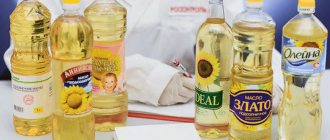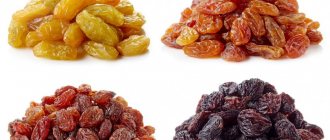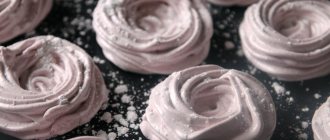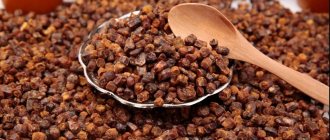People who are involved in archeology often find quite interesting things during excavations - all kinds of ancient household items, for example, or paintings. And one of the most amazing archaeological finds are pots of honey, the historical age of which is hundreds, and sometimes thousands, of years.
Modern experts do not recommend storing the main beekeeping product for so long, so today every person should discuss the shelf life of natural honey at room temperature.
General characteristics and types
Honey comes in several consistencies:
- liquid;
- thick;
- in honeycombs
Freshly pumped honey is always transparent, however, after some time, it darkens, which does not in any way affect the beneficial properties of the product.
After some time, honey undergoes a crystallization process, which indicates its naturalness.
This process starts immediately after the product is pumped out of the cells. The exceptions are varieties of chestnut and white acacia.
What is the best way to store it?
To store honey in honeycombs at home, you can use various containers. Previously, earthenware was actively used for these purposes. It protected well from moisture, sunlight and pests. But today, finding large ceramic storage vessels is quite difficult. You can use other, more accessible options:
- glass is the most common material. Glass jars do not emit toxic or other harmful substances, and also do not react with the contents of the container. The main disadvantage of the material is its transparency, which facilitates the penetration of sunlight. But this drawback is easily eliminated by wrapping it in paper or food foil;
- plastic containers – you can use containers made only from food-grade plastic. The disadvantage of this material is that in the cold it becomes brittle, and when exposed to direct sunlight it begins to release harmful substances. Therefore, it is recommended to use such dishes for temporary storage;
- wood – wooden barrels or containers are a good alternative to glass. But it is worth considering the fact that dishes made from coniferous wood contain essential oils that can affect the aroma of honey. Therefore, it is recommended to choose products made from birch, alder or linden.
Shelf life of honey according to GOST
What is the shelf life of honey according to GOST - the official legislative document of Ukraine DSTU 4497:2005 determines the conditions and shelf life of natural honey. Thus, according to clause 12.3, the shelf life of the product is 2 years from the date of manufacture.
However, when it comes to honey, it is very difficult to determine the exact date of production. What should you take as a basis? The day the bees started filling the first cells? When was the frame sealed? Or when the beekeeper pumped out the honey?
Therefore, such figures can be very subjective. If we take as a basis GOST, in force during the USSR (modern Russian GOST R 54644-2011), the standards were somewhat different.
Thus, according to clause 7.2.3, in tightly sealed containers, the natural product could be stored for up to 1 year. At the same time, the countdown was carried out from the moment of the laboratory examination, and not from the day of production. And in a sealed container - up to 2 years from the date of packaging (clause 7.2.4).
What affects the shelf life of honey?
There are a number of factors that can reduce or, conversely, increase the duration of storage at home.
Next, we will consider in more detail the factors that in one way or another can affect the safety of bee nectar.
Temperature and humidity
Humidity and storage temperature are two fundamental factors for the long-term preservation of bee products. Since the optimal temperature ranges from +1 to +20 degrees, it is best to place the nectar in the refrigerator.
If you plan to store the product at room temperature, the shelf life will depend on the variety, as some varieties are more prone to fermentation. In most cases, to preserve nectar, it is necessary to maintain the temperature at +25 degrees.
Note: It should be borne in mind that the rapeseed variety is much more susceptible to fermentation than other types, so it is better to immediately place it in the refrigerator.
In some cases, the product can be left in the cold, but it is important to ensure that the temperature does not drop below -5 degrees. But even under such conditions, the crystallization processes will accelerate, and the honey will harden much faster.
It is also necessary to monitor the humidity level. It is best to leave the jars in a dry room, since a constant supply of moisture can provoke fermentation processes and the nectar will become unsuitable for consumption.
Tara
The container in which you will store the nectar also plays an equally important role. If you plan to preserve the beneficial properties of bee products for as long as possible, the choice should be made in favor of environmentally friendly containers (Figure 3).
Figure 3. The best storage containers are glass, enamel or wood
The longest shelf life is considered to be placed in glass containers, but you can equally well use ceramic, clay or wooden containers. It is not recommended to store it in plastic containers for a long time, so after purchasing or transporting it, it is advisable to immediately pour it into separate jars or barrels.
Tightness
Although the tightness of the container is considered a complementary factor to storage conditions, without observing this nuance, the product may lose its taste and healing properties.
The tight lid reliably protects the nectar from high humidity, foreign odors or bacteria, which can provoke fermentation processes or spoilage of the product. At the same time, if you strictly observe the temperature and humidity conditions and initially pour the product into the correct containers, the tightness of the container will no longer play a fundamental role.
Crystallization
Crystallization is an absolutely natural process of honey hardening. If a product is candied, this does not mean that it has deteriorated or lost its healing properties. Rather, on the contrary, this indicates the complete naturalness of the product (Figure 4).
Figure 4. Crystallization is an absolutely natural process, indicating the naturalness of the nectar
It should also be taken into account that the timing and duration of crystallization depends on the type of product. For example, sunflower nectar can be candied within a few weeks after the date of collection, while acacia nectar, due to its composition, can remain liquid throughout the year.
Shelf life of honey at home
In order for a product to have its beneficial qualities and be palatable for a long period of time, all the necessary conditions should be created for it. The shelf life of natural honey is greatly influenced by 2 factors - lighting and darkness:
- Under no circumstances should you place it in a bright place, for example, on a windowsill. Sun rays negatively affect this product and destroy all the beneficial substances in it. Therefore, honey should be kept exclusively in a dark place.
- It is very important that the air humidity does not exceed 75%. Although there are varieties that tolerate high humidity quite well. For example, acacia honey.
Storage rules
When storing bee honey, you should pay attention to the following factors:
- Dishes. The best option for storage is a glass jar with a tight-fitting lid. The use of ceramics, wooden and enamel dishes is also permitted. Dishes that will be intended for storage must be thoroughly washed, preferably with laundry soap rather than detergents, well rinsed and dried.
Please note: it is unacceptable to store honey in iron or galvanized containers, because the product oxidizes and becomes toxic.
2. Humidity. The lowest humidity level is suitable for the most suitable storage. Honey is able to absorb water, even with a tight-fitting lid, so if the air humidity is high, it can become too liquid and begin to deteriorate.
3. Smell. The product should be stored as far as possible from substances and products with a strong, persistent odor (fish, bay leaves, pepper, paints, varnishes, etc.). Despite the tightly closed lid, honey can absorb all surrounding odors, which will significantly spoil its taste.
4. Temperature. The most optimal option is considered to be a temperature ranging from -6 to +20° C. If honey is stored at temperatures above 20° C, most of the vitamins in it are destroyed. At low temperatures the product does not change in composition, but becomes very hard.
Please note: honey must always be stored at the same temperature. That is, if it was initially placed in the cold, let it remain there; moving it to another place may cause uneven crystallization.
It is not recommended to store honey in the refrigerator, since the formation of condensation starts the fermentation process.
If this option is considered the most acceptable, the temperature in the refrigerator should not fall below 5° C.
This is interesting! Shelf life of quail eggs: storage conditions and secrets of choosing quality products
The place where honey is stored must be reliably protected from sunlight. When it gets on the jar, the product destroys beneficial substances, including inhibin, which has antimicrobial properties.
Some experienced beekeepers store honey in the cellar. And, although at first glance it seems that this is not a very suitable place, if we talk about temperature and humidity, using wooden barrels filled with wax inside, storage is quite acceptable.
Experts say that honey is like expensive wine; if it is stored correctly, it only gets better over time.
Air temperature
In order for honey to remain tasty for a long time and retain all its healing qualities, it is important to protect it from overheating. It is best to keep it at a temperature from -5 to +50C. The destruction of enzymes valuable to human health depends on the ambient temperature.
Up to +100C, the decrease in the activity of substances is insignificant, but already at +200C it drops by 1.5-2% per month, which significantly reduces the beneficial properties of honey during long-term storage. When heated above +400C, enzymes are destroyed within a few days.
Temperature fluctuations are best avoided. At home, honey is best preserved in the refrigerator. Manufacturers are increasingly using deep freezing, since lowering the temperature to -200C does not significantly affect the quality of honey.
Honey in honeycombs - how long does the product last?
Nature has long told people how long honey can be stored in honeycombs, and how to do it correctly. Bees seal honeycombs throughout the season (spring - autumn) to use it as food reserves, also for one season - from autumn to spring. Accordingly, the shelf life of honey in honeycombs without loss of nutritional value is determined by 6-12 months.
If you create ideal conditions (temperature, humidity, ventilation), you can store honey in honeycombs for 2 years or more. There are examples where honey is found that has been stored for hundreds of years without loss of taste, smell and color, but these are isolated cases.
How to properly store honey in honeycombs? Practicing beekeepers can give practical advice: each type of product (collected from spring flowers, buckwheat, acacia, mountain) has its own characteristics, has its own nuances, how to properly store frames with honey collected in different months, and even in different climatic zones. They will tell you the main secrets - how to store honey in honeycombs at home.
© Mulyukov S.G., author of articles, director of Bashkir Apiaries + LLC, 2021, https://www.facebook.com/sergey.mulyukov
Share link:
Mandatory conditions of detention
It should be immediately clarified that natural bee nectar is a rather capricious product. In order for it to retain not only its taste, but also its beneficial qualities, special storage conditions should be created for it:
Buckwheat, flower or any other variety will remain useful only if storage conditions are met.
Recommendations
- Container: storage containers should only be glass. You can buy the product in a large plastic container, but after that it is advisable to pour it into separate small jars. The containers should be small, since constantly opening the jar leads to the penetration of bacteria into the container, which means the shelf life of the nectar is reduced.
- Lighting: It is advisable to limit the access of light to containers with nectar. To do this, you can use either dark glassware, or initially place the containers in a dark and dry basement or cellar.
- Temperature: in order for the bee product to retain its beneficial properties, it is important to observe the temperature regime for its storage. It should be within +8+15 degrees. But it is much more important to prevent sudden temperature changes, which can cause condensation to form in the container and the product to deteriorate.
It is advisable to store the product separately from food with a strong odor, since honey quickly absorbs foreign aromas.
What determines the storage duration?
The shelf life of honey is influenced by many factors, in addition to temperature. The main ones include:
- Humidity. If the product contains more than 19% water, it will not be stored for long. Fermentation processes may begin.
- Tara. A glass, wooden, enamel or clay pot is well suited for storing the product. First of all, natural and environmentally friendly materials are welcomed. Therefore, clay dishes are ideal for storage. It does not allow foreign odors and sunlight to pass through, does not oxidize, does not enter into a chemical reaction, and helps maintain a suitable temperature inside. The same can be said about containers made of wood. The main thing is not to use containers made from pine needles.
Honey jars
Storage in a plastic container is also allowed. Only it is mainly used for transporting the product or for short-term storage. It is very important that the plastic is certified, otherwise honey can absorb harmful chemicals from it, which will cause great harm to the body.
Important! Storage in metal containers is strictly prohibited, as a reaction and oxidation process may begin. After this, the product will definitely become unfit for consumption.
Also, some beekeepers focus on the tightness of the container in which honey is stored. However, this indicator does not so much extend the shelf life as protect the product from dust, high humidity or foreign odors.
Many people love only liquid, freshly pumped honey and consider it the healthiest. However, this is not at all true. A product that has crystallized also contains useful substances and is suitable for consumption.
Freshly pumped honey
If the honey sits for a long time and remains the same liquid, then it is counterfeit. It definitely has no value for the body.
Situations also arise when honey is divided into two parts and one of them becomes a little thicker, while the second remains very liquid. This indicates that the product was unripe at the time of pumping out. But there's nothing wrong with that. This honey also contains useful substances, and it just needs to be given time to ripen.
In general, if you follow all the storage rules, then honey will be aromatic, tasty and rich in vitamins for a long time.
0 0 votes
Article rating
Possible processes in the product
In some cases, after a while, a white coating is observed on the product, which is called the process of honey blooming.
There are misconceptions that this is sugar used to feed bees. In fact, this action indicates the maturity of the honey and its high quality characteristics. And the white crust of sugar is just the process of crystallization of fructose and glucose.
When stored properly, honey will definitely darken, thicken and crystallize - this indicates its maturation and natural origin. Only honeydew honey does not thicken, which is due to the high fructose content in the composition.
By following simple storage rules, you will always have natural honey at home, which will help with colds or with the use of which you can always please your loved ones with delicious sweets.
Where to store
Considering that the ideal temperature for storage does not exceed 10 degrees, there are not many options for where to store comb honey. For example, in a country house or in a private house there is often a basement or cellar . The temperature in them, even in summer, does not exceed +10-15 degrees, which is the norm for storing this product. However, these rooms have a drawback - high humidity.
Many cellars, especially in spring and rainy autumn, flood, and fungus and mold often grow on the walls. Plus, don’t forget about pests. Somewhere there may be slugs, and somewhere there may be wax moths, the larvae of which love to feast on both honey and wax. Therefore, it is recommended to store honeycombs only in dry and pest-free basements. Moreover, the product must be in an airtight container.
In a city apartment, the most suitable place to store delicacies is the refrigerator, namely the vegetable compartment. However, to prevent honey from absorbing odors and excess moisture, it must also be stored in an airtight container.
conclusions
Let's return to the main question that united us in this article: does honey have an expiration date? After conducting a comprehensive analysis of documents and opinions, we came to the conclusion that it is impossible to determine the exact time period, because it depends on the conditions in which the natural product was stored.
It is possible that the bee treat does not have an expiration date if stored correctly. This is confirmed by the honey found in the pyramid, where the optimal temperature and humidity levels were naturally maintained.
Storage locations
Should be stored in dark, dry, cool places. Where to hide if you're going on vacation?
Where to store honey in combs? It is necessary to separate the concepts of “storage” and “active use”.
Fridge
Many people wonder whether it will be possible to preserve their delicacy at home using a refrigerator if there is no basement or cellar? Keep the temperature within +5 degrees. Get rid of excess moisture. Do you have dry freeze mode? There is nothing to worry about, the technology will take care of the safety of the bee treat.
Make sure that the container with comb honey is airtight, because honey absorbs vapors. You shouldn't store anything nearby. Fruits, cereals, salty products are bad neighbors.
Basement, cellar
Private houses have a cellar. Most are not suitable for storage. Temperature and humidity in the cellar air can spoil the bee product.
It is recommended to keep it in wooden barrels impregnated with wax. Barrels should not be placed near sauerkraut, cereals, salt and sugar. Another option is to hide the keg in the pantry on the bottom shelf.
Wardrobe, storage room
This option is suitable in winter. In summer it is better in the previous versions. In winter, put it on a shelf without light and you can forget about the product. Remember not to store food nearby. Make sure there are no insects in the pantry.
Secrets of long-term honey storage
The “highlight” of bee honey is that it is stored in a ready-to-use form. The long shelf life of honey largely determines its healing effect on the body. He is one of the few who knows the secret of eternity and can be kept for so long because:
- Chemical composition of honey. It contains over 300 components. In the list of “leaders” there are glucose and fructose, slightly less sugar, but in different types and varieties, the ratio of how much of this or that “ingredient” is different, hence the changes in physical properties and quality.
- The shelf life of honey also directly depends on the water content - at least 20%! Natural honey in its natural form always has low humidity, and in such an environment a few microorganisms and bacteria can survive, which also allows it to be preserved longer, since harmful organisms simply die in the near future. The environment in a honey jar is so inhospitable that it is almost impossible to spoil natural honey.
- High acidity levels in the product according to GOST. PH is in the range of 3-4.5, which makes the shelf life of natural honey so long, because this level of acidity “kills” everything that could “settle” in it! Because of this, bacteria and harmful organisms “hand in hand” are looking for another place to rent, since they will quickly die in a jar of honey.
- Bee. She dictates her terms. The process of making honey is almost alchemy. Nectar contains a lot of water, and the bee dries the honey nectar by flapping its wings. The structure of the bee stomach is no less interesting, since it can produce the enzyme glucoxidase, which is designed to participate in the formation of 2 more by-products: hydrogen peroxide and gluconic acid. Hydrogen peroxide is another layer of protection against harmful organisms.
- Homemade Bashkir honey from our production is additionally purified from impurities, so, yes, it can retain its appearance almost forever, although according to GOST, of course, there is an expiration date for honey.
- Finally, the shelf life of linden honey (or other types) is so long due to the tightness of the vessel. The best proof of this is Egyptian pots that have passed through millennia. If you leave the jar open in a humid environment, it will spoil. This is the main rule.
Each jar should always indicate the shelf life of honey, while a homemade natural product can be stored for years and even decades without any problems if certain conditions are met. Closed containers are one of the keys to success! Thus, the answer to the question “Does honey spoil due to long-term storage” has been found: “No, if you follow the storage rules”!
Enemies of honeycomb nectar
The honey is inside the honeycomb, it is carefully sealed, and the presence of propolis completely protects it from the effects of pathogenic bacteria and microbes. Therefore, microbes are not enemies for the cellular product; high room humidity is much more dangerous. Beeswax has the ability to absorb moisture, so the fermentation process can develop.
Let's consider what else can affect the quality of bee products on frames:
sunlight
Under the influence of ultraviolet rays, the beneficial components of nectar lose their potency.
If the frames are exposed to light for a long time, the apiproduct becomes useless.
Wax moth
It develops very rapidly; in 5 days, an adult larva grows from the egg, which can cause serious damage to honeycombs. This insect is active in hot weather, its body length is approximately 2 cm. An adult insect does not pose a threat, you should be afraid of moth larvae, they are very voracious and eat honey, bee bread, and wax.
Where to store honeycombs with honey so that they remain undamaged by insects? In order to avoid attacks by wax moth larvae, you need to keep the frames in a room with good ventilation; the air temperature should not exceed 10 degrees Celsius. Then you don’t have to be afraid of voracious larvae.
Mold
Quite often, if stored improperly, honeycombs become moldy. This occurs due to frequent changes in temperature conditions, and as a result the appearance of condensation. In addition, the room should be well ventilated. Honeycombs affected by mold should not be consumed.
This is interesting! The content of useful substances in the honeycomb product significantly exceeds their concentration in liquid nectar. This is due to the presence on the honeycomb of such substances as beebread, pollen, pollen and propolis.
Shelf life of honey depending on container
If the storage container is chosen correctly, in most cases, honey retains its properties for the same period in containers made of different materials. These can be glass or plastic jars, clay pots or wooden barrels. The main thing is that the lid of the container is tightly closed and prevents moisture and air from entering. However, the state standard determines shelf life, which depends on the container. For example:
- in containers of 25 kg or more – 8 months;
- in sealed containers made of glass or polymers – 1 year;
- in unsealed closed containers - no more than eight months;
- in paraffin paper glasses – maximum six months.











